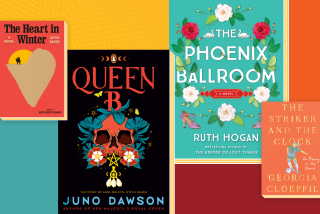ANOTHER DAY OF LIFE by Ryszard Kapuscinski;...
ANOTHER DAY OF LIFE by Ryszard Kapuscinski; translated from the Polish by William R. Brand and Katarzyna Mroczkowska-Brand (Penguin Books: $6.95)
This book begins in September, 1975, as the new rulers of Portugal have granted independence to Angola and other colonies, effective Nov. 11. Civil war has broken out in Angola, among the FNLA (National Front for the Liberation of Angola, backed by the Western powers and Zaire), the MPLA (Popular Movement for the Liberation of Angola, backed by the Soviet Union and Cuba) and UNITA (National Union for the Total Independence of Angola, backed by the Western powers and South Africa). And just at this moment, Ryszard Kapuscinski, a foreign correspondent for the Polish Press Agency, gains a seat on one of the last Portuguese military aircraft flying to Angola.
Kapuscinski writes lyrically of the abandoned capital, Luanda, and the handful of inhabitants that remain. When he goes to the northern front with the MPLA, the leader of the battalion, Comandante Ndozi, explains the war to him: âWe have a hundred tribes and must build one nation out of them. . . . All our enemies feed on the backwardness of the people . . . and pay handsomely to keep the tribal wars going without end.â
NEW YORK INTELLECT A History of Intellectual Life in New York City, From 1750 to the Beginnings of Our Own Time by Thomas Bender (Johns Hopkins University Press: $10.95) Thomas Bender has written a social and cultural history of New York City from 1750 to contemporary times. His work is presented in three interrelated essays--on civic, literary and academic cultures--and features profiles of prominent New York writers and intellectuals, such as Walt Whitman and Edmund Wilson, among others, as well as some less well-known, like Randolph Bourne (the âliterary voice of Young Americaâ) and Herbert Croly (founder of the New Republic and editor of Architectural Record).
However, as Ross Miller wrote in these pages: âBy focusing on accomplishments rather than the process of making ideas and art in New York, Bender misses the essence of the subject he so assiduously attempts to locate . . . (he) cannot quite locate New Yorkâs core.â
ALL FIRES THE FIRE by Julio Cortazar; translated from the Spanish by Suzanne Jill Levine (Pantheon Books: $7.95) A collection of short stories first published in 1966 by the world-renowned Argentine writer of novels, short stories, poems and essays.
The stories in this collection range from fantasy to paranoid confabulation to straight realism. The title story typically merges fantasy and realism: The setting is, at first, ancient Greece; the proconsul knows his wife has exchanged an encouraging smile with a gladiator and has arranged to have him fight a giant Nubian to the death. Yet a subsequent paragraph brings the reader to contemporary Paris, into a phone conversation that tells of another romantic triangle.
Another story shows Cortazarâs range, as well as his politics: A fictional Che Guevara remembers the capture of the Cuban Sierra Maestra by Fidel Castro and 50 peasants in a tale thatâs as close as Cortazar comes to a conventional memoir.
DVORAK IN LOVE by Josef Skvorecky; translated from the Czech by Paul Wilson (W.W. Norton: $7.95) The composer Antonin Dvorak left his native Bohemia in 1892 for a two-year stint as director of the National Conservatory of Music in New York. In âDvorak in Love,â Josef Skvorecky, a fellow Czech who left his native country in 1968, weaves the facts of this visit into an engaging fictional fabric.
The novelâs characters are those from Dvorakâs own life: Jeannette Thurber, the founder of the conservatory and Dvorakâs patron on his visit; Dvorakâs wife, Anna (âan energetic pianist, a true helpmateâ to the composer); Annaâs sister, Josephine, whom Dvorak loved all his life; his son Antonin and daughter Otylia (who elopes with Dvorakâs secretary, Kovarik).
But it is Skvoreckyâs depiction of Will Marion Cook, a black American violinist (whose own work would later reflect Dvorakâs influence), which best personifies Americaâs liberating effects on Dvorak and, conversely, his powerful effect on others. Seen as a whole, âDvorak in Loveâ is, in reviewer Richard Ederâs view, âuntidy, sentimental and sometimes daring . . . an endearing and sometimes provocative patchwork.â
THE NINE LIVES OF ALGERNON by John Espey; illustrated by Claire Eder (Capra Press, Santa Barbara: $8.95) Written in 1940 to entertain a colleagueâs 5-year-old daughter, John Espey discovered after all these years that âThe Nine Lives of Algernonâ is in fact simply âa cat loverâs book.â
Algernon is indeed a very clever cat, trying out different pursuits in each of his lives: Heâs an explorer, a cat of action, a Casanova cat, a major feline poet, an astronaut and a philosopher, among other things. But when he tires of each new venture, he moves on into his next life, so, after tasting his ninth life, he concludes philosophically that âit is good to live all nine lives at onceâ and goes back to finish whatâs left over from his previous lives.
More to Read
Sign up for our Book Club newsletter
Get the latest news, events and more from the Los Angeles Times Book Club, and help us get L.A. reading and talking.
You may occasionally receive promotional content from the Los Angeles Times.








